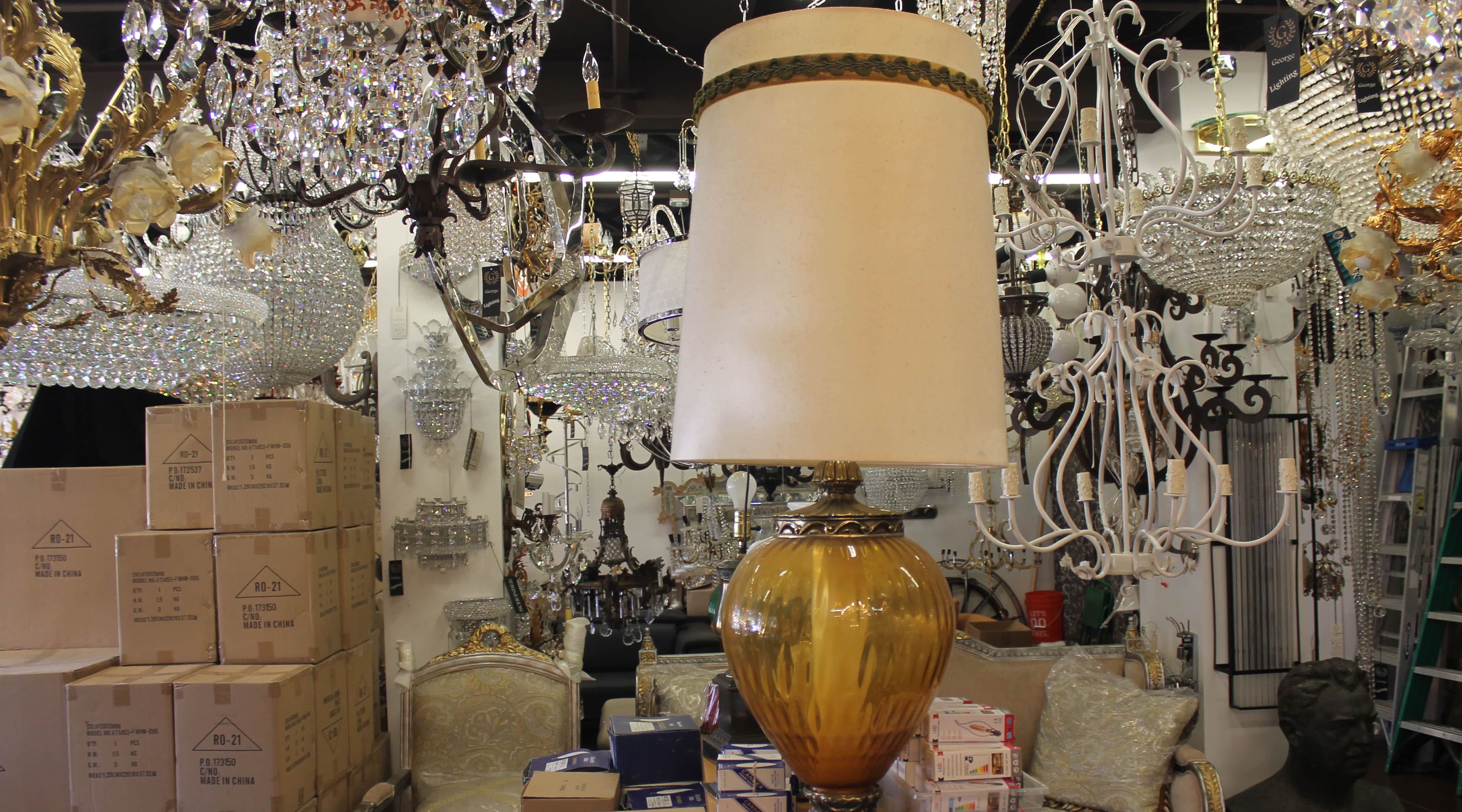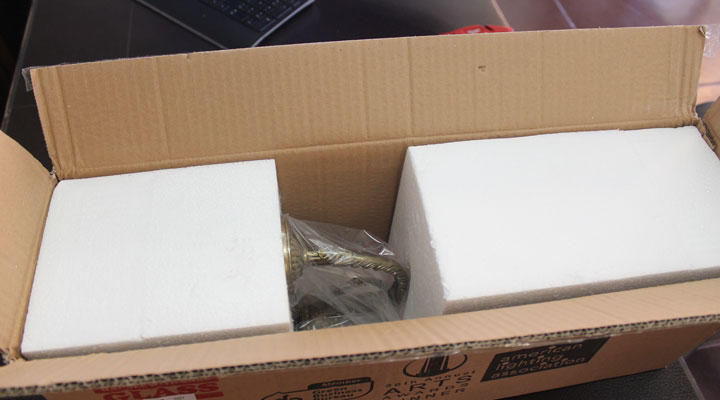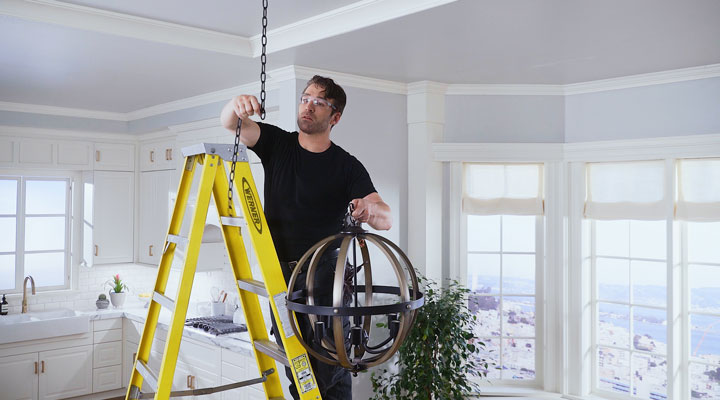
How to Pack Lamps
Feb 9, 2024 / Matthew Sanderson
Some lamps need a little extra love during a move. The fanciest require custom boxes to suspend hundreds of individually-wrapped crystals within. Fortunately, most of us don’t have to go to that effort, or expense. But we can all benefit from a little expert advice on how to pack lamps, because lighting is expensive. And fragile.
Lighting shop owner Payman Reza houses a ton of vintage lamps and chandeliers. To move an antique chandelier across the country, he created a wooden crate and suspended the piece inside. He added support using additional pieces of two-by-two wood on the four corners of the box.
“So basically the piece itself will have a little bit of movement,” he said. “If there’s no movement and the vehicle comes to a stop, it could get damaged. So, secure it and suspend it in a wooden crate.”
Whether it’s for your move or just for organizing your home, read on to hear from lighting experts we interviewed on how to pack and properly store your lamps and lighting fixtures.
How to Pack Lamps for a Move
You will need adequate packing and materials to ensure your lamp has a safe move.
“Lighting comes in all shapes and sizes,” said Clark Linstone, spokesperson for a national lighting retailer Lamps Plus. “Your packing game plan is going to dictate how you approach pieces based on size, materials and weight.”
“When we ship products to customers from our California warehouse, it’s imperative the packaging is protective, easy to unpack and the materials are recyclable,” he added.
Carefully disassemble your lighting, and be sure to pad it with bubble wrap, newspapers, or even towels or other items that are coming along for the move.
“Lighting is meant to be assembled and disassembled for moving and storage,” Linstone said.
Lampshades can be especially delicate, so we cannot stress enough caution on filling the moving box with very soft material surrounding it. For chandeliers, you may need to disassemble and individually wrap each crystal. An iron floor lamp looks like and could very well be indestructible, but you will still want to pack it in bubble wrap or recyclable foam to avoid damage.
“Some pieces can be heavy so you’re going to want to take caution and consider a moving cart or other means,” Linstone added.
You’re also going to want to accurately label your boxes and use caution placing heavier items under lighter items.
You should pack your lamp yourself unless it’s an heirloom and valuable. Working with a trusted lighting packing, storage and moving professional can ensure your lamp is wrapped and safe.
Packing Vintage Lamps and Chandeliers
Packing vintage lamps follows the same rules as any lighting. You want to keep it secure and protected.
Reza, manager of George’s Lighting Plus in Hollywood, runs a shop filled with ornate, and at times fragile, antique fixtures that date back to early entertainment years in Los Angeles. His store performs many repairs for moving companies, sometimes having to track down rare parts from around the world.
“When you’re packing your lamp for a move, any component that can be detached – like a shade – separate it from the lamp,” he said. “If you’re moving a chandelier, it can take an hour, literally. Dismantle it, and then move it to a new location and we can assemble it back together.”
Right now, vintage lamps, such as mid-century Danish and 1920s to 1930s German, are trendy, Reza added. There’s many European components involved, and he recommends changing out the parts so they are U.S. compatible, since wiring and bulb sockets are different.
“It’s a big industry with vendors who buy these lamps,” he said. “Don’t underestimate the hand-me-down.”
Every item in Reza’s store has a story. One of the most memorable was 19th century St. Louis chandelier that was 4 feet long and worth $160,000.
“Packaging wasn’t an easy proposition,” Reza said.
Based on age, no matter what, you always should have a plan for your packing and moving your lighting fixtures.
“You probably want to ensure the lighting is stored in an environment that doesn’t reach temperature extremes with heat or cold,” added Linstone.
(Top two photos courtesy of Lamps Plus)







